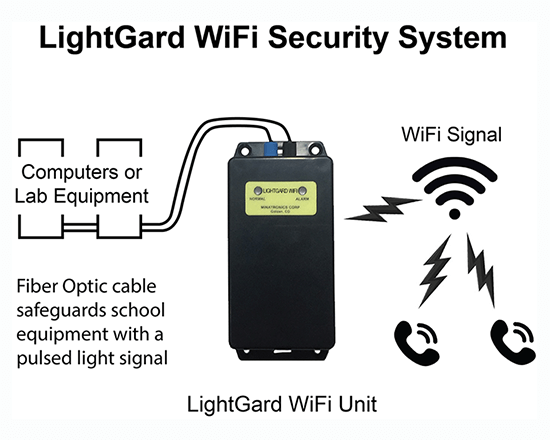The Evolution of Fiber Security System in High-Tech Security Installations
The Evolution of Fiber Security System in High-Tech Security Installations
Blog Article
The Ultimate Guide to Fiber Optic Safety And Security Systems for Your Service
In an era where safety and security issues are paramount for services, comprehending the complexities of fiber optic modern technology can be transformative. This overview details just how integrating fiber optic safety systems not only improves information defense but also provides benefits like resistance to disturbance and real-time surveillance abilities.
Comprehending Fiber Optic Technology

The core of a fiber optic wire is composed of a slim glass or plastic facility, bordered by a cladding layer that mirrors light back into the core. Single-mode fibers are designed for long-distance transmission, while multi-mode fibers are appropriate for shorter distances, frequently utilized within structures.
Fiber optics are not just much faster yet also more safe than standard circuitry. Their fundamental resistance to electro-magnetic interference and the problem of tapping into the signal without detection make them a preferred choice for organizations prioritizing information integrity and safety. As companies significantly depend on safe and secure and reliable communication systems, recognizing fiber optic modern technology becomes necessary for notified decision-making.
Secret Benefits of Fiber Optic Safety
When thinking about safety alternatives for an organization, the advantages of fiber optic systems are specifically engaging. Fiber optic innovation provides phenomenal information transmission speeds and data transfer capacity, making it ideal for managing high-resolution video feeds from monitoring video cameras. This ability ensures that security employees get real-time information, boosting total response times to prospective protection risks.
Furthermore, fiber optic cords are inherently immune to electro-magnetic disturbance, which can endanger the honesty of conventional copper-based systems. This resistance makes certain that the information transferred remains safe and secure and nonstop, offering a more dependable safety facilities. Furthermore, optical fiber are much less vulnerable to physical damage, as they are made from glass instead of metal, decreasing maintenance prices and downtime.
Another considerable benefit is the increased scalability of fiber optic systems. As service demands progress, fiber networks can be quickly expanded to fit extra protection tools without significant overhauls to the existing infrastructure. Fiber optic systems supply enhanced cybersecurity features, consisting of security capacities that safeguard delicate information from unauthorized access. Collectively, these benefits make fiber optic protection systems a durable option for companies seeking to enhance their safety and security actions.
Setup Process and Factors To Consider
Thinking about the intricacies included, the installation process of fiber optic safety systems calls for careful preparation and implementation. The first step involves a detailed website evaluation to identify optimum places for cabling and tools. This evaluation needs to think about environmental factors, existing framework, and possible vulnerabilities.

Furthermore, the installation should abide by regional building regulations and sector criteria. This might include coordinating with various stakeholders such as structure managers, IT groups, and safety and security personnel to make certain seamless assimilation with existing systems.
Post-installation, rigorous screening is necessary to validate system efficiency and identify any type of issues that image source may arise. By focusing on these considerations throughout the installation procedure, companies can guarantee a robust and efficient fiber optic security system that satisfies their details safety and security needs.
Newest Developments in Fiber Optic Security
Recent innovations in fiber optic innovation have considerably enhanced the capacities of security systems for services. One of one of the most notable technologies is the integration of fiber optic sensing units that can detect vibrations and intrusions along the border of a facility. These sensing units give real-time monitoring, making it possible for rapid reaction to potential breaches.
Additionally, the development of dispersed fiber optic sensing modern technology enables the continual monitoring of big locations with a single fiber cable television. This approach not just decreases setup prices but likewise boosts the reliability of monitoring systems by getting rid of the demand for multiple, separate sensors.
In addition, improvements in multiplexing techniques have actually enabled organizations to transfer huge amounts of information over fiber optic networks, enhancing the capacities of video security systems. High-def video clip feeds can currently be sent out her response over long distances without loss of top quality, guaranteeing that protection workers have accessibility to clear and workable information.
Lastly, the use of artificial intelligence (AI) combined with fiber optic systems is changing danger detection. AI formulas can assess information from fiber optic networks to determine unusual patterns or behaviors, permitting aggressive safety measures. These technologies collectively represent a significant jump ahead in fiber optic security technology.
Picking the Right System for Your Organization
Picking the proper fiber optic protection system for your company is vital for ensuring ideal defense and satisfaction. To make an enlightened selection, analyze your certain protection demands, thinking about factors such as the size of your properties, the nature of your operations, and potential susceptabilities.
Begin by evaluating the degree of safety called for; as an example, high-risk settings might require advanced systems with integrated monitoring and invasion detection capacities. Next, consider scalability; as your service expands, your safety and security system need to be qualified of expanding to suit boosted needs without considerable overhauls.
In addition, examine the dependability and efficiency of various systems. Seek companies with recognized track records and client reviews that vouch for their service top quality. It's likewise recommended to ask concerning the technology's compatibility with existing framework, making certain a seamless assimilation process.
Final Thought
To conclude, fiber optic security systems present a robust service for enhancing company official statement protection infrastructures. The combination of high-speed information transmission, resistance to electromagnetic disturbance, and progressed monitoring abilities dramatically boosts total defense (fiber optic security system). By recognizing the innovation, identifying its advantages, and taking into consideration the installment procedure, organizations can make educated decisions. The most up to date developments further reinforce the efficiency of these systems, making sure that companies stay secure and versatile in an ever-evolving hazard landscape.
Report this page